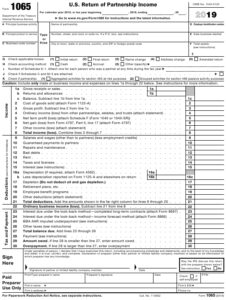
Next, compare the transactions listed in QuickBooks Online with those on your credit card statement and the accounting entry for depreciation mark off each transaction as they match. In today’s digital age, managing financial transactions has become easier with the help of accounting software like QuickBooks. When it comes to credit card transactions, reconciling them in QuickBooks is a crucial step to ensure accurate financial records and maintain financial clarity.
Accurate account dormant account definition management is essential for maintaining a balanced financial record and avoiding discrepancies. It is important to handle balances effectively to prevent errors in financial reports and to ensure that your accounting records align with your actual expenses and income. By learning how to enter credit card payments in QuickBooks Desktop, you can easily compare your QuickBooks records against your credit card statements to keep them aligned. This ensures that you track and account for all transactions, which is crucial to maintain accurate records and identify discrepancies quickly. It is essential to utilize both the online and desktop versions of QuickBooks to ensure all transactions are accurately recorded and accounted for.
- Address any discrepancies between the credit card statement transactions and the records in QuickBooks by reconciling the differences and ensuring accurate financial alignment.
- I’m not sure why, but the transactions show as cleared/reconciled in the register (see attached screen shot).
- It is a key step in establishing the accuracy of financial records and is often used to compare the records of a company with external records such as bank statements.
- If you need help with this step, check out our tutorial on how to enter credit card charges in QuickBooks Desktop.
- In QuickBooks Online, you can easily review your transactions by navigating to the Banking tab and selecting the appropriate account.
Wrap-up: How to enter credit card payments in QuickBooks Desktop
Keep a record of all changes made for future reference and potential audits. Prepare for the reconciliation by entering all transactions that occurred during the statement period you are about to reconcile. In your first reconciliation, ensure that the opening balance in QuickBooks Desktop is in sync with the balance of your real-life bank account as of your chosen start date. After you click Reconcile Now, a pop-up screen will appear asking whether you want to write a check for payment now or enter a bill to pay later. If you don’t want to execute either of the two actions, click Cancel, and you’re done. Here’s a tutorial video of the credit card reconciliation process in QuickBooks Desktop Pro and Premier.
Step 2: Select the Credit Card Account
If necessary, make adjustments to the opening balance or opt to Undo Last Reconciliation to start anew. Input the Ending Balance from your bank statement and include any service charges and interest details, avoiding duplication of previously entered data in QuickBooks Desktop. For bank transactions such as deposits, withdrawals, and fees, make sure each one is recorded; leveraging the QuickBooks bank feed feature can facilitate easier tracking and recording.
Here are some reasons why it’s worth learning how to enter credit card payments in QuickBooks Desktop. In this blog, you’ll dive into the essentials of how to record credit card payments in QuickBooks Desktop. Make sure you enter all transactions for the bank statement period you plan to reconcile.

Troubleshooting common reconciliation issues in QuickBooks Online and QuickBooks Desktop
However, if the charge is more than a month old, then it needs to be investigated to see if the entry in QuickBooks is wrong. To see all of your adjustments on the list, you can review a Previous Reconciliation report for the reconciliation you adjusted. This will show you cleared transactions and any changes made after the transaction that may not show in your discrepancies. To reconcile, simply compare the list of transactions on your bank statement with what’s in QuickBooks. Match each transaction listed in your bank statement with those in QuickBooks Desktop.
To reconcile your account, review your transactions and trace them in both directions—from your books to your credit card statement, and from your credit card statement back to your books. Are you tired of the endless hassle and confusion that comes with managing credit card payments? QuickBooks Desktop is a powerful ally to simplify your accounting processes. This lets you write a check or enter a bill to pay to cover the outstanding balance.
By reconciling credit card transactions, users gain insights into their spending habits, budgeting, and financial health. Linking your bank and credit card accounts to online banking allows for the automatic downloading of transactions and entry of the opening balance into QuickBooks Online. Ensuring the accuracy of the ending balance input is crucial, as it directly impacts the reconciliation process. To enter the balance effectively in QuickBooks Online, navigate to the ‘Banking’ tab, select the relevant credit card account, and click ‘Add’ under the ‘Go to Register’ drop-down menu. Then, input the ending balance from your statement and ensure that it matches the actual amount.
In our sample credit card statement, you’ll notice that the transaction for Michael Kretchmar for the amount of $300 isn’t recorded in QuickBooks. For any discrepancies, investigate the cause and make adjustments accordingly. Ensure that the balance in QuickBooks Online matches the balance on your credit card statement to complete the reconciliation process effectively.
By the end, you’ll be able to navigate your financial transactions and enter credit card payments easily — even without any accounting experience. The next step is to identify any discrepancies between these two sets of records, which could be due to errors, omitted entries, or timing differences in recognizing transactions. Once these discrepancies are identified, they need to be thoroughly investigated. For instance, if a check issued by the company has not been cashed, it would show up in the company’s records but not on what is notes payable the bank statement.

Nejnovější komentáře